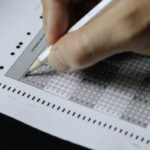
Using a Data-Driven Approach to Write Better Exams
Like many faculty members, I started teaching as a subject matter expert without a formal background in education. My examination questions were either based on

Like many faculty members, I started teaching as a subject matter expert without a formal background in education. My examination questions were either based on

Magna Publications © 2024 All rights reserved